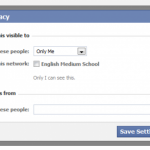Deleting a Microsoft Exchange Server mail box is a relatively simple five step process. However, it is important to note that the mailbox will remain connected for thirty days after deletion. This is called the “mailbox retention period,” during which users can reconnect their mailbox if needed. Deleting a mailbox will not permanently remove it from the server’s database. It will only mark it for future deletion. Once the mailbox retention period expires, the mailbox will be permanently deleted from the database. Someone who does not wish to wait for Read More
Acceptable Use Policy

An acceptable use policy is a set of rules applied by website owners and networks, created to restrict the ways in which the site or the network may be used. AUP documents are also used by universities, corporations, Internet Service Providers, and schools. The acceptable use policies are also integral parts of information security polices; it is a common practice to ask the new members of an organization to sign an AUP before giving them access to its information. And for this reason, an AUP have to be clear and Read More
How to Change a Hotmail Password

Windows Live Hotmail is a free email service provided by the Microsoft Corporation. The service was previously titled “MSN Hotmail” but has primarily been referred to as “Hotmail” by society. The service was one of the first web email services being launched in July of 1996 and purchased by Microsoft in 1997. Windows Live Hotmail was launched worldwide in 2007. Windows Live Hotmail has more than 350 million world-wide users, supports more than 35 languages, and surpasses both Yahoo!Mail and Gmail it total use in the Webmail industry. A common Read More
Widgets

In the ever-increasing race to create a more user-friendly World Wide Web experience by expanding options for Internet users, the opposite outcome can happen by isolating many users with complex Internet functions, programs, and terminology. So it is nice to see that the Internet user experience is getting easier and less complicated in some ways. One of these ways is with the implementation and use of widgets. The term “widget” can refer to any icon or graphical interface element that is manipulated by the computer or Internet user to perform Read More
How to Hide Friends on Facebook

Facebook is a great way to connect with others. Although Facebook users enjoy connecting with others, they may not want some of their contacts to see the friends they have made or the contacts on their account. In order to make friends invisible on a Facebook profile page, privacy settings must be adjusted. This can be achieved by the following process: Log on to Facebook. Select the “Account” tab from the upper right corner of the page. Select “Privacy Settings” from the drop down list. This leads to the ‘Choose Read More
How to Delete History on Firefox

Mozilla Firefox is a web browser that the Mozilla Foundation runs and NetScape owns, which allows users to browse the Internet, access email, and use a wide variety of plug-ins and add-ons that are not available on any other browser. Mozilla Firefox was created to provide users with more support and functionality than other web browsers could provide and is now one of the most popular web browsers in the world. How to Delete History on Firefox Like all other web browsers, Mozilla Firefox stores the user’s web history Read More
How to Zoom in Internet Explorer

Internet Explorer (IE) is the Microsoft produced web browser that is freely bundled with the Windows operating system. A common task that arises for users of Internet Explorer is zooming in on web pages that do not have font large enough to view. This capability is included with the web browser to greater enhance the accessibility of web pages to those who have difficulty with vision or just to cope with sites that do not provide an automatic scaling of the text or imagery included on a web page. The Read More
What is a Content Management System?
A content management system–otherwise known as a CMS–is a piece of software that runs on a server. As the name suggests, the software is intended to manage content. The overall goal of a CMS it to make it easier for the average Internet user to publish content on the web. Without having to go in and code new pages using HTML, a user could update a website with just a few clicks. A CMS took the focus away from the coding and the design and instead focused it on the Read More
How to Fake Posts and Control Messages to Usenet

From: Anonymous (Pretending to be: tale@uunet.uu.net (David C Lawrence) Subject: FAQ: Better living through forgery Date: 19 Mar 1995 02:37:09 GMT Anonymous netnews without “anonymous” remailers Inspired by the recent “NetNews Judges-L” events, this file has been updated to cover forging control messages, so you can do your own article canceling and create and destroy your own newsgroups. Save any news article to a file. We’ll call it “fakepost” in this example. Edit “fakepost”, and remove any header lines of the form: From some!random!path!user (note: “From “, not “From: “!!!) Article: Lines: Read More
SSML (Speech Synthesis Markup Language)

Speech Synthesis Markup Language (SSML) is a markup language used for speech synthesis applications that is based on XML–the set of rules used to encode documents electronically. SSML is one of three of these types of markup languages that allow for voice created functionality within Internet browsers and email programs. The ultimate goal of SSML is to provide applications that enable a person to–instead of having to use a mouse and a keyboard–use their voice to offer commands for tasks such as searching the Web, responding to email and appreciating Read More


Share on: